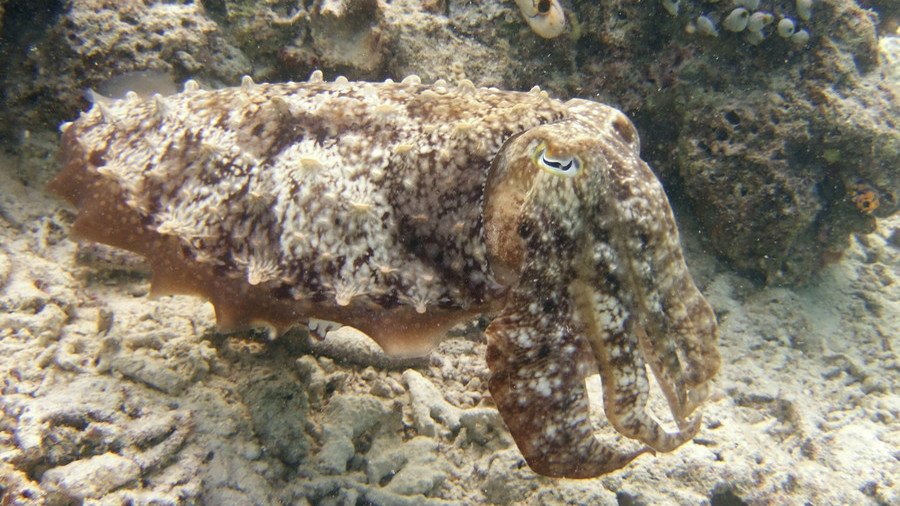Scientists unlock secrets of 3D ‘invisibility cloak’ using… cuttlefish? (VIDEO)

An international group of scientists has unlocked the secret to natural, textured camouflage, potentially opening the door for a real-life invisibility cloak some time in the not-too-distant future.
Cuttlefish can almost instantaneously blend in with their surroundings, thanks to neural circuits, which the team from the Marine Biological Laboratory and University of Cambridge identified. They also noticed a number of similarities with the neural circuitry that controls iridescence in certain species of squid. Both creatures use the unique camouflage technique for both defense ‒ to hide from predators ‒ and offense ‒ to spring traps on unsuspecting prey. The scientists published their findings Friday in the journal iScience.
“The sea is full of strange and wondrous creatures, but there are few as bizarre and intelligent as octopuses and cuttlefish,” Dr. Trevor Wardill from the Department of Physiology, Development and Neuroscience at the University of Cambridge said in a press release.
“We’ve seen dozens of examples of these animals suddenly appearing from nowhere, as if they have thrown off an invisibility cloak. How they do this has long remained a mystery.”
While it’s well known that animals like the chameleon can change color to blend in with their surroundings, what differentiates the cephalopods is their ability to mimic the physical texture of their surroundings with their skin.
The secret lies in small, muscular organs called 'chromatophores,' which not only change color on demand, but can also trigger a secondary set of micro organs to create bumps called 'papillae.' Cuttlefish use a peripheral nerve center called the stellate ganglion, which houses something called the giant axon system, as well as the motor neurons responsible for the papillae's 'textural' function on the fish's skin, the team found.
US patient to have genes edited in/world-first human trial https://t.co/yOUwN4mI6opic.twitter.com/Z4Hw77bgr5
— RT (@RT_com) November 16, 2017
It was the so-called giant axon system, which measures just 1 millimeter in diameter, that helped Nobel prize-winning Cambridge scientists Alan Hodgkin and Andrew Huxley, along with Australian scientist John Eccles, to reverse engineer how the nerve impulses in the fish actually work.
“This discovery is really interesting from an evolutionary point of view. It opens up the question of which came first: was the common ancestor to cuttlefish and squid able to camouflage themselves using papillae or express iridescence, or possibly both?” said Dr. Paloma Gonzalez-Bellido of Cambridge University, lead author on the research paper.
The team also discovered a “catch-like” system within the papillae that allows the micro organs to hold their shape for prolonged periods of time, even without a constant neural signal. Similar 'catches' allow oysters, mussels and scallops to remain closed without exerting too much energy.
READ MORE:Octo-fuss: Internet goes wild for color-changing hatchling footage (VIDEO)
“This research on neural control of flexible skin, combined with anatomical studies of the novel muscle groups that enable such shape-shifting skin, has applications for the development of new classes of soft materials that can be engineered for a wide array of uses in industry, society, and medicine,” said Professor Roger Hanlon of the Marine Biological Laboratory, who participated in the research.
The research was partly funded by the US Air Force Office of Scientific Research and the UK Biotechnology and Biological Sciences Research Council, hinting at potential military applications at some point in the future.
Like this story? Share it with a friend!














